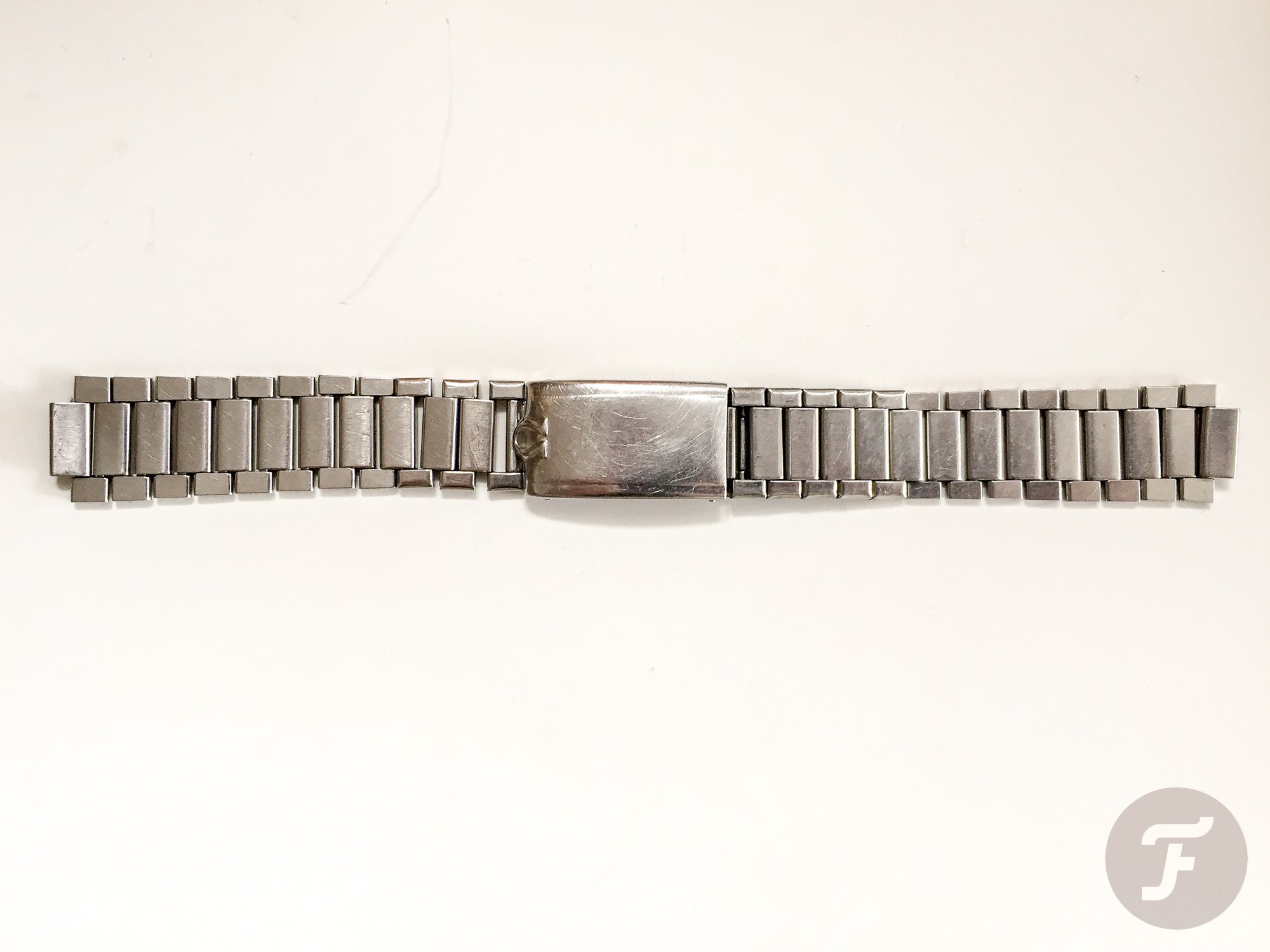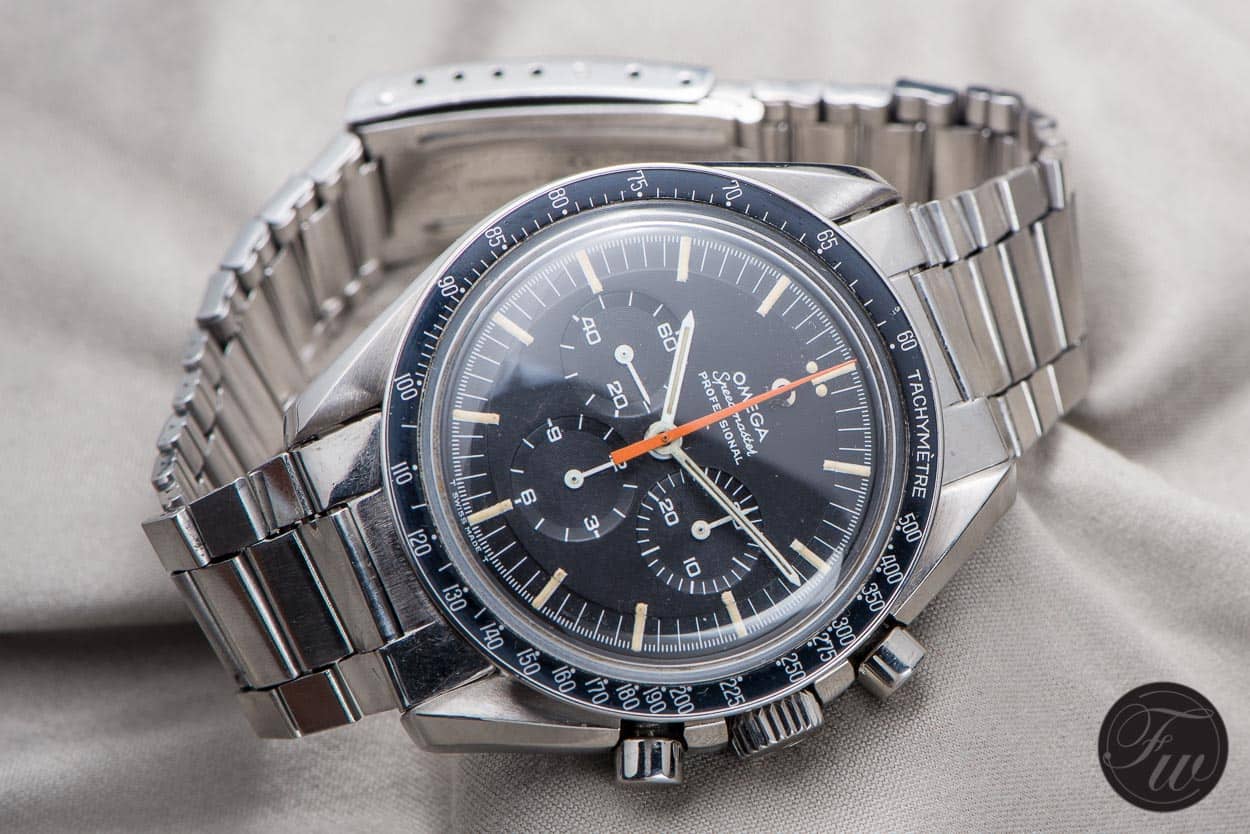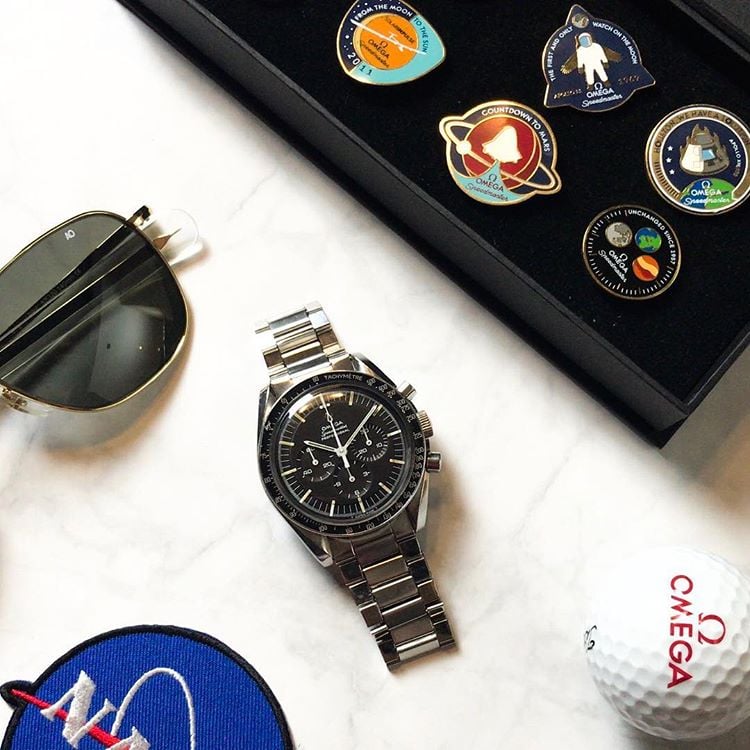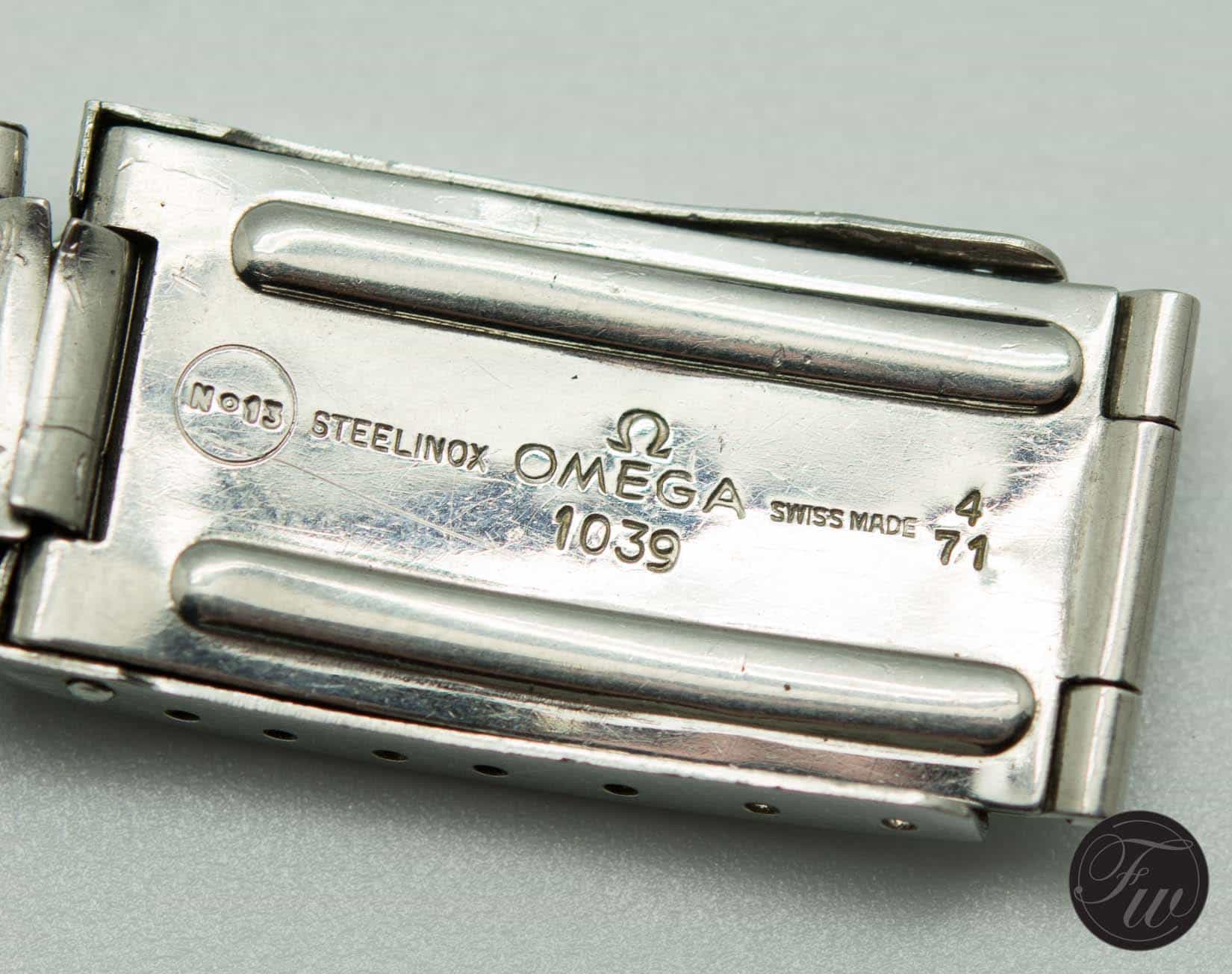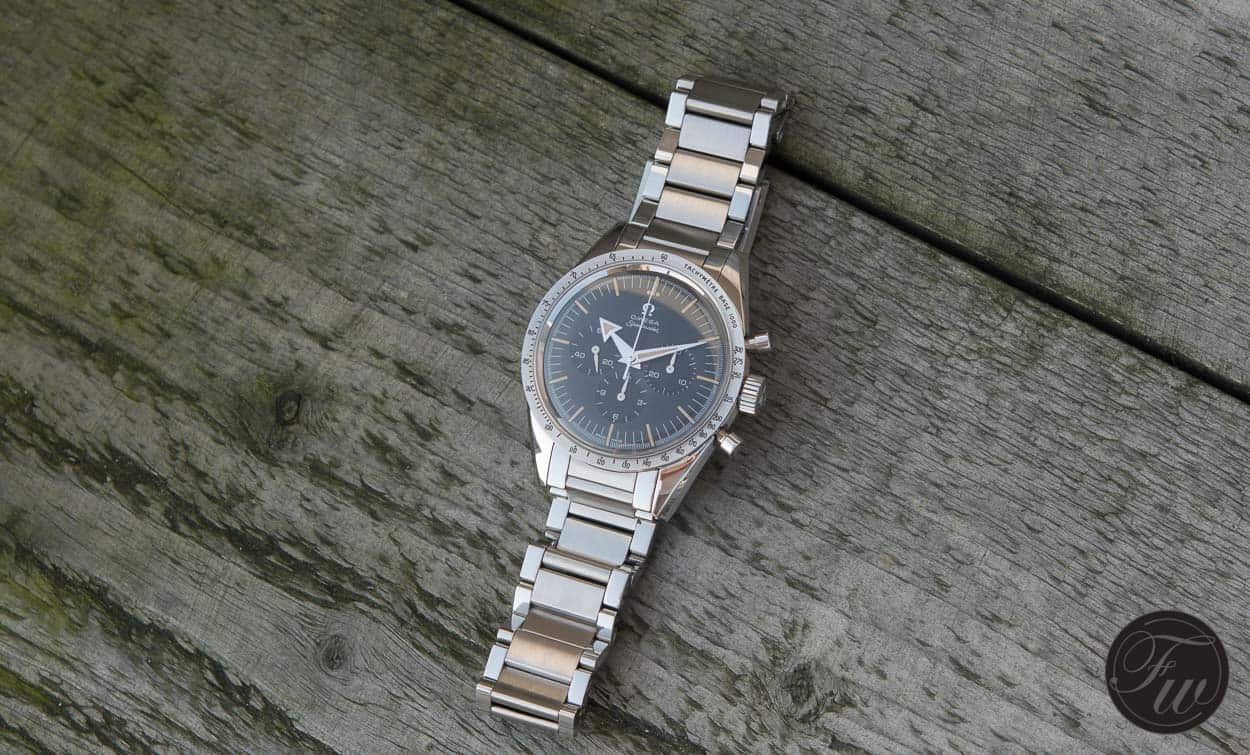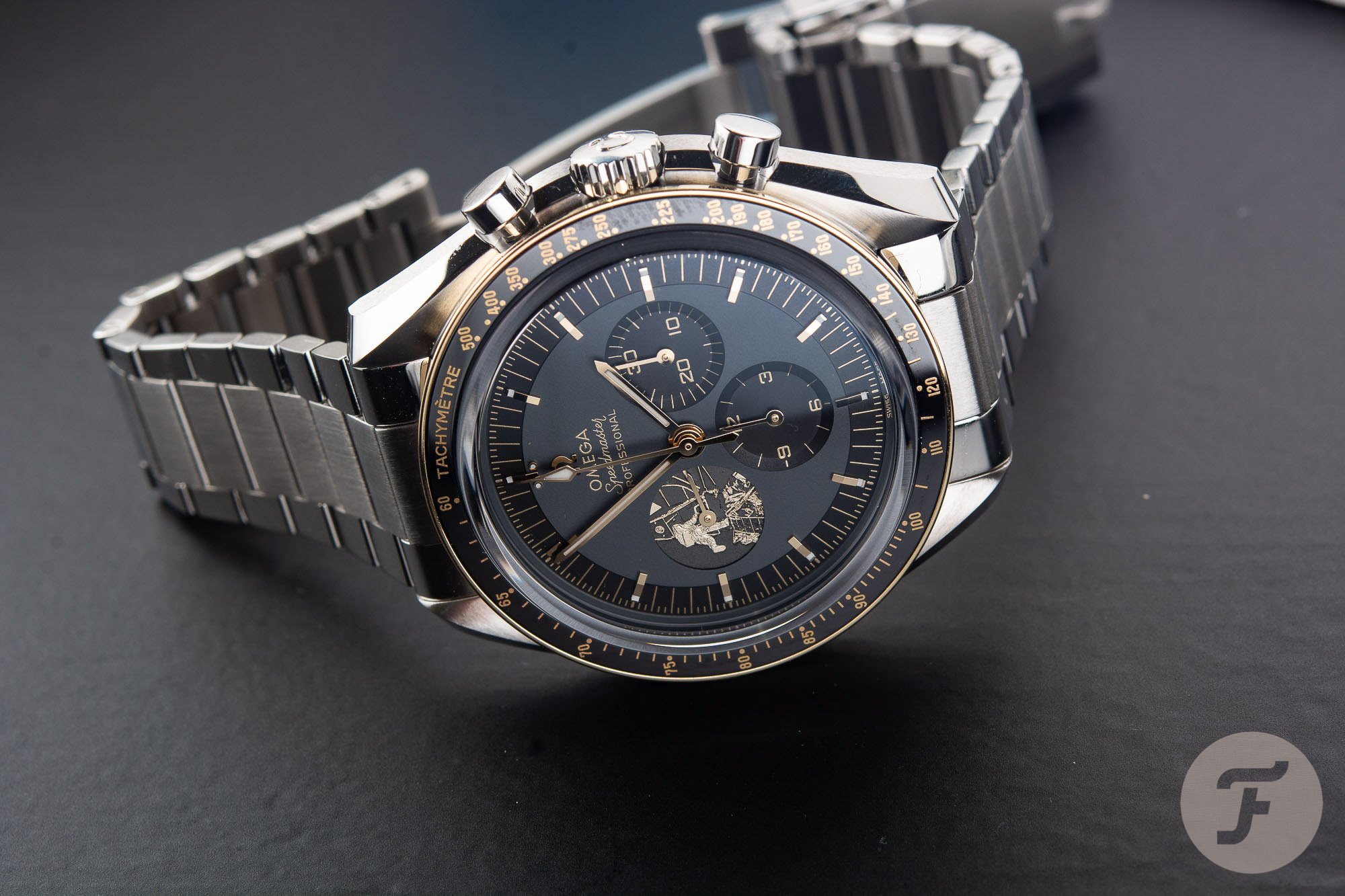Legendary Vintage Bracelets – Omega Reference 1039
Our last special Watch Strap Review; Legendary Vintage Bracelets article was well received by you guys.
Thanks for that. We thought it would be cool if we continued the series with yet another iconic accessory. This time we took a closer look at a brand most of us at Fratello has a thing for. No, it’s not Rolex neither Seiko. It’s the “other” brand. I’m talking about Omega of course. When it comes to George Clooney’s favourite brand, we can choose from a bunch of different bracelets. One of the all-time classics were the 1171s that Omega used on both Speedmaster and Seamaster models. I’m sure we’ll talk about that reference number soon. However, something more unusual, so to speak, is an earlier reference that Speedy fans associate with vintage 321 Speedmasters.
It’s arguably the coolest looking vintage bracelet in the Omega line up from that time.
Speedmaster 1039 Bracelet
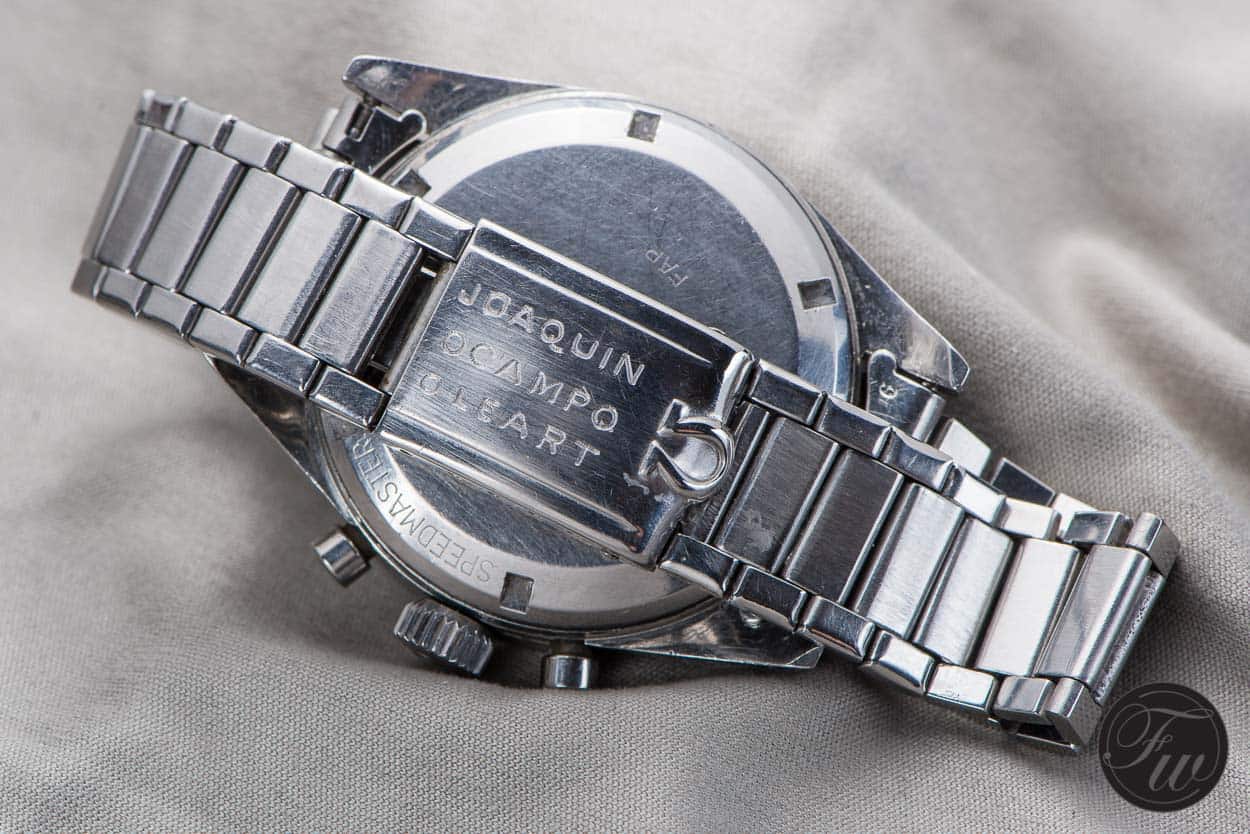
A super rare and early 2915-2 with the original ref. 7077 bracelet (not the short clasp, giveaway of the early 7077 bracelets)
The straps and bracelets people used on the Speedmaster back in the day were so versatile that you could pretty much write a book about them (and if you do, remember that I gave you the idea). From corfam straps to JB Champion bracelets to various Omega references and even Tropic straps, the list is endless. Though, most 321s I see at get-togethers have a bracelet on that is much different than the 1171 and that is the 1039. It’s arguably the coolest looking vintage reference in the Omega line up from that time. It’s also a hair puller, like most vintage bracelets, but more about this later. But the 1039 was by far not the first bracelet on early Speedmasters. It’s probably the one that was made in the most substantial quantity, so despite it being flimsy, many examples survived that close-to-50 years since they were made.
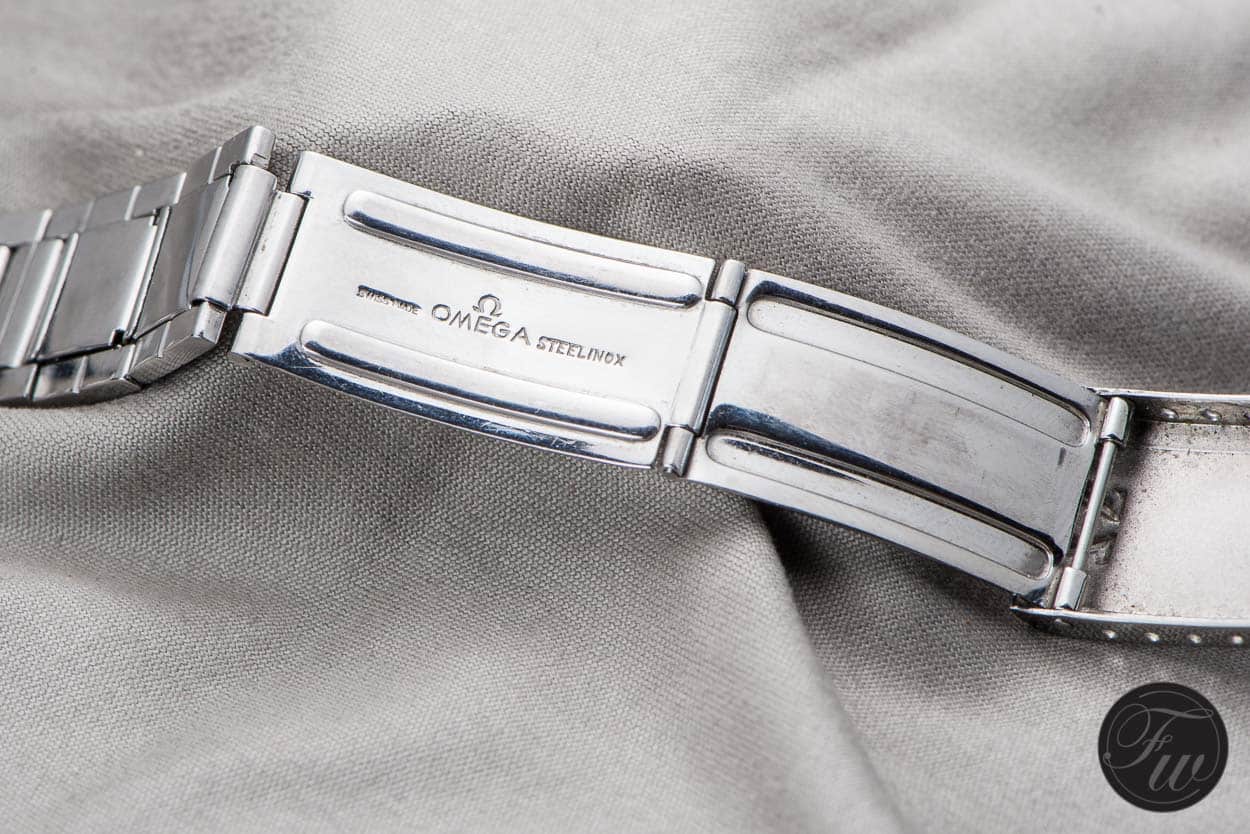
One of the two versions of the 7077 clasp on an early 2915-3
The other references
This article isn’t about vintage Speedmaster bracelets, but the 1039 is predominantly known to be one. Hence the list that I’ll be giving you is based on Speedy bracelets. What connects them other than the model, though, is their design. This is the angle I’m coming from. They all had thin, flat links in 3 rows (2 narrow on the side, one wide in the middle) and expanding links – to a certain number. That system is somewhat similar to the Doxa Expandro bracelet we talked about earlier. The first of such bracelets (as well as the first Speedmaster bracelet) is the 7077. According to researches, Omega produced it until 1961. Then came the 7912/6 and 7912/12 (1961-1966). Contrary to popular belief this was not an exclusive Speedmaster bracelet. So much so, that I once had a small time-only Seamaster that came initially on such a bracelet with No. 5 end links.
7912’s are hard to find these days as well, and when you do, they usually command a very high price. It had twice as many semi-expanding links (10) as the previous reference (5). Same design as the 7077 but the clasp was longer. 1506/16 (1964-1966) was the next reference (albeit there was a super rare reference 1501-1035, but that is as uncommon as hen’s teeth) which was the successor of the 7912. Very similar to the 7912 and also has the semi-expanding links. We’re almost there, but there is one more reference here, the 1035/506. One thing I also need to mention is that the numbers after the / refer to the end links. So the bracelet reference, in this case, is 1035, the 506 reference is for the end links. This was in production between 1967 and 1972, again looks a lot like the 1506 with longer clasp cover.
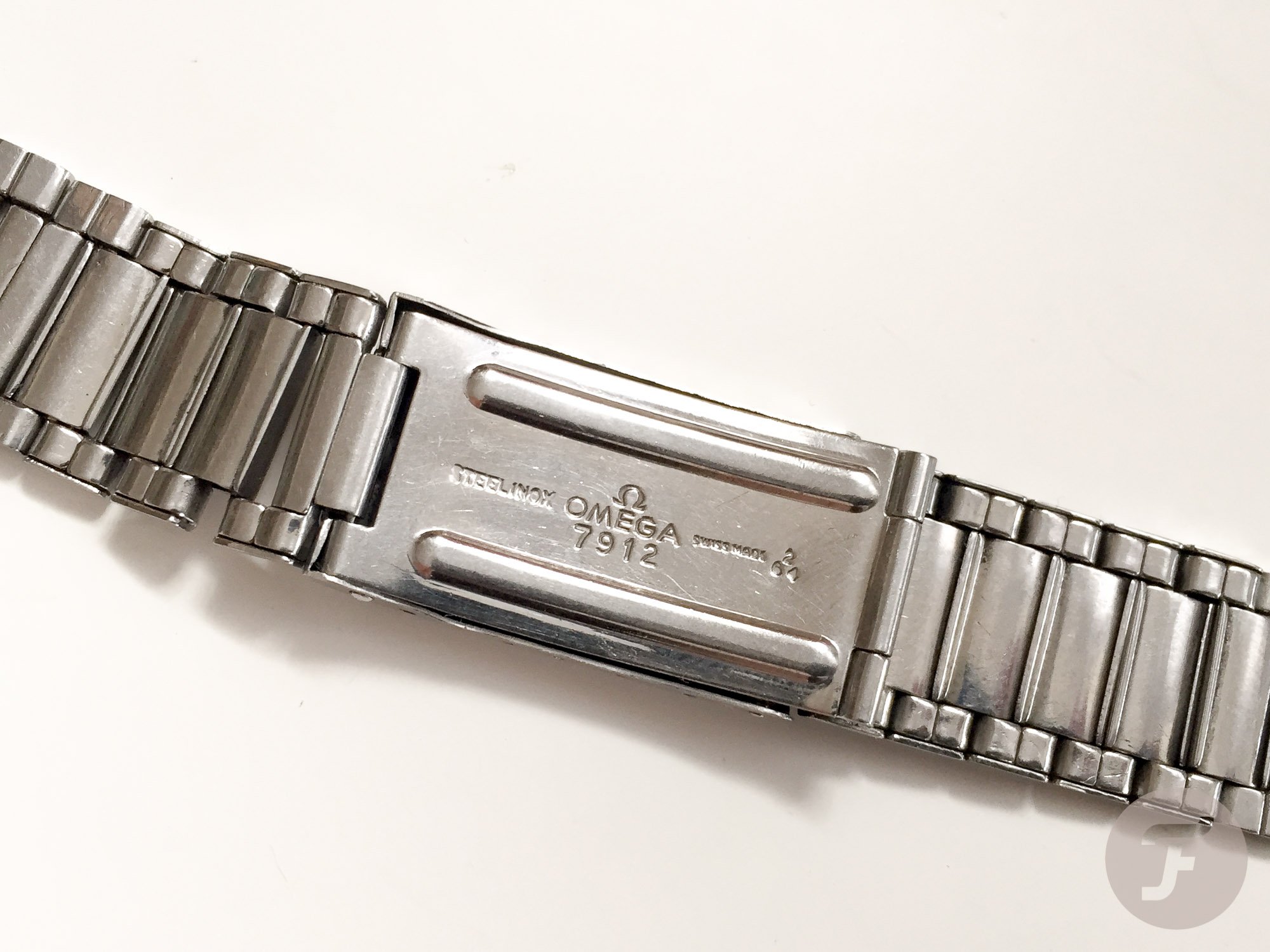
7912 bracelet with a date stamp (2 – 64) note the flat plates you need to remove when you want to size your bracelet
The first 1039 came out in the fourth quarter of 1966 and probably made until the end of 1971/early 1972.
1039
Finally, we arrive at the 1039/516. Despite its relatively short production time of 5 years between 1966 and 1971/1972 (compared to reference 1171’s period of 12 years), this is the reference you can find most often. From eBay to dealer websites and various For Sale ads in watch forums the 1039 is everywhere. Compared to the 1035 the bracelet is identical. While the 1035 originally had 19mm end links (506) the 1039’s end links are 20mm (516). The first 1039 came out in the fourth quarter of 1966 and probably made until the end of 1971/early 1972. Of course, the 1039 had semi-expanding links that have springs inside them. They are, just like the links on the previously mentioned reference, break easily. So often you see huge gaps between the links, this is because the little metal pieces that act as spring inside the link break.
Construction
Most modern Omega bracelets have a push pin or a screw which you have to remove to be able to size the thing by taking out or adding one or more solid links. The 1039, on the other hand, has no solid bracelet links. They are very thin, hence light and flimsy, metal plates that are folded together. If you want to adjust the size by taking out or adding a link you need to flip the bracelet over. You see two types of links; on some (usually towards the end of the bracelet) you can see the metal plate being folded together over a frame that keeps the form of the link. On others, there is a flat middle plate. You need to slide this plate out, and you can unhook the link. Often once the plate is off, you can see the expanding springs too.
Given that they are not broken. Often when the springs are gone, they are removed from the links. This is why sometimes you see the bracelets with huge gaps between the middle links. You need to remove another plate so you could unhook that link from the bracelet. Once you had the right size, all you need to do is to hook the bracelet parts together and slide the plate back. The link that you took out should be a full link with the back plate and all.
Dating
You might be wondering how we can determine the bracelet’s date so precisely? Well, Omega (‘s bracelet manufacturer) employed no fools back in the days. They made sure to mark each clasp with the date of production. This is not an Omega thing, Rolex among many other brands have a similar system. When it comes to Omega and as such the 1039s as well, the clasp should have two numbers; 1-2-3 or 4 indicating the quarter of the manufacturing year and a 2-digit number for the exact year. In my bracelet’s case, for instance, the numbers are 4 and 71. This means that the bracelet was made in the 4th and last quarter of 1971, which was also the last year 1039 bracelets were made. Of course, one can swap the clasp on a bracelet, and it’s impossible to determine the age only by the links.
New bracelet
After the 1039 the bracelet design changed significantly. The links became more round and solid. The 1039 was the last flat link Omega bracelet…until 2017. For the 60th anniversary of the Speedmaster, Seamaster, and Railmaster the brand reissued their very first 1957 models with matching flat link bracelets. They looked great on photos, and I enjoyed wearing the Railmaster I reviewed a while back too. But the feeling of the 1039 was not there. As you’d imagine, the new bracelets are heavy and solid. So, in my book, albeit they were extremely well-made bracelets, it was a bit of a hit-n-miss. Until this year. Not sure if Omega heard the people talking about the 2017 bracelets or they realised themselves that it was not the way to go. Regardless, the bracelets they put on the new 50th Anniversary Apollo 11 Speedmaster is a definite hit.
Or volltreffer as our German readers would say. It’s light enough not to add significant weight to the watch yet feels sturdy. It’s not flimsy but very flexible. It looks and wears great, and I can but encourage you to go to your local Omega AD and try the watch on. You might not like the model (that’s a subjective thing, I guess) but it’s worth checking out the bracelet in my opinion. For those of you who want a vintage, browse the usual places and do the homework before getting one. Make sure you are not over-paying for it. 1039 bracelets in good go for €800-1200 depending on the numbers of links, the presence of end links (for this amount they should) and if the semi-expanding feature is working or not. Every vintage Omega guy (Speedmaster or Seamaster owner) should have a 1039 in its strap box.

